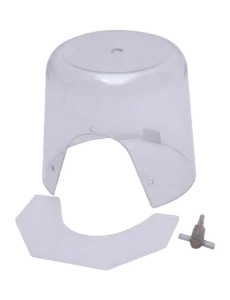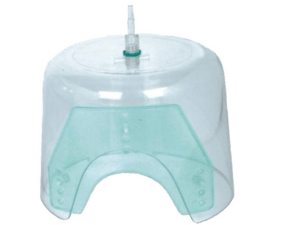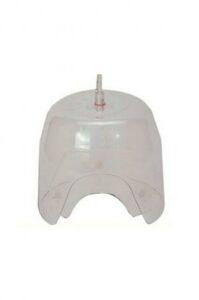Discover the benefits and usage of oxygen hoods in medical settings. Improve patient care and respiratory support. Click to learn more.
In the realm of medical devices, oxygen hoods have emerged as a revolutionary tool for enhancing respiratory care and patient comfort. With their ability to deliver optimized oxygenation, oxygen hoods offer a compelling alternative to other respiratory devices. This in-depth guide will examine the benefits and use of oxygen hoods while contrasting them with well-liked alternatives like ventilators, nasal cannulas, oxygen masks, and high-flow nasal cannulas. Additionally, we will delve into crucial topics like proper usage, maintenance, safety measures, and their effectiveness in pediatric respiratory support. So, buckle up and embark on this informative journey to discover how oxygen hoods are transforming the landscape of respiratory care.
But before we dive deeper into the world of oxygen hoods, it’s worth mentioning Medzell, a futuristic B2B platform that strives to promote Indian medical devices in emerging markets. Medzell is a trailblazing platform connecting healthcare providers with innovative and high-quality medical solutions, including oxygen hoods. As we explore the advantages of oxygen hoods, we’ll also shed light on how Medzell contributes to advancing healthcare through its visionary approach.
Understanding Oxygen Hoods: Benefits and Usage
Oxygen hoods, also known as oxygen tents or hoods, are specialized respiratory devices designed to provide supplemental oxygen to patients. These hoods envelop the patient’s head and upper body, creating a controlled environment for the administration of oxygen. This unique design ensures a high concentration of oxygen is delivered directly to the patient, optimizing respiratory support.
The benefits of using oxygen hoods are manifold. Firstly, they offer superior oxygenation compared to other devices. With a tightly sealed enclosure, oxygen hoods minimize oxygen dilution and deliver a concentrated oxygen supply. This targeted oxygen delivery promotes better oxygen saturation levels, leading to improved patient outcomes.
Secondly, oxygen hood provide a comfortable and soothing environment for patients. The spacious design allows patients to move more freely, reducing feelings of claustrophobia often associated with other respiratory devices. This increased comfort fosters patient compliance, making oxygen therapy more effective.
Oxygen Hood vs. Ventilator: Which is Right for You
Confused between an oxygen hood and a ventilator? Learn about their differences and find the right respiratory device for your needs. Click for a detailed comparison.
When it comes to respiratory support, both oxygen hoods and ventilators play vital roles. However, they differ significantly in their functionality and purpose. Understanding their distinctions is crucial for selecting the appropriate device based on the patient’s condition and specific requirements.
The highly developed apparatus known as a ventilator, sometimes known as a mechanical ventilator or a respirator, entirely takes over a patient’s breathing process. It provides mechanical ventilation by delivering controlled amounts of oxygen and assisting with the removal of carbon dioxide from the lungs. Ventilators are primarily used for patients with respiratory failure or those unable to breathe adequately on their own.
On the other hand, oxygen hood are designed to deliver supplemental oxygen to patients without completely taking over the breathing process. They create a controlled environment around the patient’s head and upper body, allowing for the administration of oxygen at higher concentrations. Oxygen hood are often preferred for patients who require moderate to high levels of supplemental oxygen but can still breathe on their own.
Oxygen Hood vs. Nasal Cannula: Which is More Effective
Wondering if an oxygen hood is more effective than a nasal cannula? Explore the advantages and choose the right option for optimized oxygen delivery. Click for a detailed comparison.
In the realm of oxygen therapy, nasal cannulas have long been the go-to option for delivering supplemental oxygen. They consist of soft prongs that fit into the patient’s nostrils, delivering a continuous flow of oxygen. While nasal cannulas are effective for many patients, oxygen hoods offer several advantages that may make them a superior choice in certain scenarios.
One of the primary benefits of oxygen hoods over nasal cannulas is their ability to provide higher concentrations of oxygen. Nasal cannulas typically deliver oxygen at lower flow rates, resulting in a lower concentration of oxygen reaching the lungs. Oxygen hoods, on the other hand, create an enclosed space where oxygen is concentrated, ensuring higher levels of oxygen reach the patient.
Furthermore, oxygen hood offer a more comprehensive approach to oxygen delivery. They envelop the patient’s head and upper body, creating a controlled environment that maximizes oxygen delivery while minimizing dilution. This all-encompassing coverage enhances oxygenation and promotes better respiratory support.
Oxygen hood vs. oxygen mask: which offers better comfort
Seeking comfort during oxygen therapy? Compare the benefits of an oxygen hood and an oxygen mask to choose the ideal option. Click to explore the differences.
Comfort plays a crucial role in patient compliance and overall treatment outcomes. When it comes to oxygen therapy, both oxygen hoods and oxygen masks offer distinct advantages in terms of comfort. Understanding these benefits can help patients and healthcare providers make informed decisions regarding their respiratory support.
Oxygen masks are commonly used in various medical settings to deliver supplemental oxygen. They cover the nose and mouth, ensuring a continuous flow of oxygen. Oxygen masks provide a sense of familiarity to patients, as they resemble traditional masks worn in medical environments. However, they can sometimes cause discomfort due to their design, which may result in pressure points and skin irritation.
In contrast, oxygen hood offer a spacious and open environment for patients. This design allows for more freedom of movement, reducing the feelings of confinement and discomfort often associated with oxygen masks. The increased comfort provided by oxygen hoods can contribute to better patient compliance and a more positive therapeutic experience.
Oxygen Hood vs. High-Flow Nasal Cannula: Which Provides Superior Oxygenation
Uncertain about using an oxygen hood or a high-flow nasal cannula? Compare their oxygenation capabilities and select the optimal option.
High-flow nasal cannulas (HFNC) have gained popularity in recent years as a means of delivering high-flow oxygen therapy. They offer several advantages over traditional nasal cannulas, including the ability to deliver higher flow rates and heated and humidified oxygen. While HFNCs are effective in many cases, oxygen hoods provide unique benefits that make them a compelling option in certain scenarios.
One of the significant advantages of oxygen hoods over high-flow nasal cannulas is their ability to deliver higher concentrations of oxygen. HFNCs can deliver oxygen at high flow rates, but the concentration of oxygen may not be as high as that achieved with an oxygen hood. The controlled environment created by an oxygen hood ensures a more concentrated supply of oxygen, optimizing oxygenation and improving patient outcomes.
Additionally, oxygen hood provide comprehensive coverage of the patient’s head and upper body, whereas high-flow nasal cannulas only deliver oxygen through the nostrils. This difference in coverage allows oxygen hoods to achieve more efficient oxygenation and better respiratory support.
How to Use Oxygen Hoods Properly, with Step-by-Step Instructions
Proper usage of oxygen hoods is crucial for maximizing their benefits and ensuring optimal respiratory support. By following a step-by-step guide, healthcare providers can ensure the accurate and effective utilization of oxygen hoods. Here’s a comprehensive guide on how to use oxygen hoods correctly:
Gather all the necessary equipment, including the oxygen hood, oxygen source, and tubing. Make sure the tools are tidy and in good operating order.
- Positioning: Place the oxygen hood over the patient’s head, making sure it covers the head and upper body adequately. Adjust the straps or fasteners to secure the hood in place.
- Sealing: Ensure a proper seal by adjusting the hood to fit snugly around the patient’s neck. Check for any gaps or leaks and make the necessary adjustments to maintain a sealed environment.
- Oxygen Connection: Connect the oxygen source to the oxygen hood using the appropriate tubing. Ensure a secure connection and check for any leaks.
- Oxygen Flow: Set the prescribed flow rate of oxygen according to the patient’s needs. Ensure that the flow meter is accurately calibrated, and monitor the oxygen saturation levels regularly.
- Monitoring: Continuously monitor the patient’s oxygen saturation levels, respiratory rate, and overall comfort during oxygen therapy. Make adjustments to the oxygen flow rate as necessary.
- Documentation: Record the patient’s vital signs, oxygen flow rate, and any observations related to the oxygen hood usage in the patient’s medical records.By following this step-by-step guide, healthcare providers can ensure the correct usage of oxygen hoods, promoting optimal respiratory support and patient care.
Maintaining Hygiene: How to Clean and Maintain Oxygen Hoods
Maintaining cleanliness and hygiene is paramount when it comes to medical devices, including oxygen hoods. Proper cleaning and maintenance not only ensure the longevity of the equipment but also prevent the risk of infection and contamination. Here are some expert tips and guidelines for cleaning and maintaining oxygen hoods:
- Daily Cleaning: Clean the oxygen hood with mild detergent and warm water after each use. Pay special attention to areas that come into direct contact with the patient, such as the interior surface of the hood and the straps.
- Disinfection: Regularly disinfect the oxygen hood using a hospital-grade disinfectant. Follow the manufacturer’s instructions regarding the appropriate disinfectant and contact time.
- Drying: Allow the oxygen hood to air dry completely before storing or using it again. Ensure proper ventilation and avoid direct sunlight, as excessive heat may damage the materials.
- Regular Inspection: Routinely inspect the oxygen hood for any signs of wear and tear, such as cracks, tears, or loose fasteners. Replace any damaged components promptly to maintain the integrity of the hood.
- Storage: Store the oxygen hood in a clean and dry environment, away from direct sunlight and potential contaminants. Follow the manufacturer’s recommendations for storage conditions, if available.
- Documentation: Maintain a record of the cleaning and maintenance activities performed on the oxygen hood. This documentation helps track the equipment’s history and ensures adherence to regulatory standards. By following these cleaning and maintenance guidelines, healthcare providers can ensure the hygiene and longevity of oxygen hoods, contributing to the safety and well-being of patients.
Enhance Respiratory Care: The Benefits of Oxygen Hoods
Oxygen hoods offer a wide range of benefits that contribute to enhanced respiratory care and improved treatment outcomes. Let’s explore some of the key advantages of using oxygen hoods
Optimized Oxygenation: Oxygen hoods deliver concentrated oxygen directly to the patient, ensuring higher levels of oxygenation. This targeted oxygen delivery improves oxygen saturation levels and promotes better respiratory support.
- Patient Comfort: The spacious and open design of oxygen hoods provides a comfortable environment for patients. It reduces feelings of confinement and claustrophobia often associated with other respiratory devices, enhancing patient comfort and compliance.
- Ease of Movement: Oxygen hoods allow patients to move more freely compared to devices like oxygen masks or nasal cannulas. This freedom of movement improves patient mobility and promotes a sense of normalcy during oxygen therapy.
- Reduced Oxygen Dilution: The enclosed space created by oxygen hoods minimizes oxygen dilution, ensuring a higher concentration of oxygen reaches the patient. This targeted delivery enhances the efficiency of oxygenation and treatment effectiveness.
- Pediatric Respiratory Support: Oxygen hoods are particularly beneficial for pediatric patients who require respiratory support. Their comfortable and non-restrictive design helps alleviate anxiety and improve treatment compliance in young patients. By harnessing these benefits, oxygen hoods significantly enhance respiratory care, improve patient comfort, and contribute to better treatment outcomes.
Ensuring Safety: Guidelines for Oxygen Hood Usage
Safety should always be a top priority when using medical devices, including oxygen hoods. Adhering to essential guidelines and safety measures ensures the well-being of both healthcare providers and patients. Here are some crucial safety measures to consider when using oxygen hoods:
- Proper Training: Ensure that healthcare providers who handle and operate oxygen hoods are adequately trained in their usage, including proper assembly, disassembly, and troubleshooting.
- Fire Safety: Oxygen supports combustion, making fire safety a critical consideration. Keep oxygen hoods away from open flames, flammable materials, and potential ignition sources. Follow fire safety protocols and guidelines in medical settings.
- Monitoring and Alarms: Regularly monitor the patient’s vital signs, including oxygen saturation levels and respiratory rate. Ensure that alarms and monitoring systems are functional and set appropriately to alert healthcare providers of any deviations.
- Emergency Planning: Put a strategy in place in case of equipment failure, power outages, or other unforeseen circumstances. Familiarize healthcare providers with emergency procedures and ensure they are trained to respond appropriately.
- Regular Equipment Maintenance: Follow the manufacturer’s recommendations for equipment maintenance and calibration. Regularly inspect the oxygen hood for any signs of damage or wear and tear. Promptly replace any faulty or damaged components.
- Infection Control: Follow strict infection control protocols when using oxygen hoods. Ensure proper hand hygiene, clean and disinfect the equipment regularly, and use appropriate personal protective equipment (PPE) when handling patients.
By following these safety guidelines, healthcare providers can minimize risks, ensure optimal patient care.
Pediatric Respiratory Support: Benefits of Oxygen Hoods
Pediatric respiratory support requires specialized care and attention. Oxygen hoods offer several benefits that make them particularly advantageous for providing respiratory support for pediatric patients. Let’s explore some of the key benefits of using oxygen hoods in pediatric care:
- Comfort and Compliance: The spacious and non-restrictive design of oxygen hoods helps alleviate anxiety and discomfort in pediatric patients. This enhanced comfort promotes better treatment compliance, as children are more likely to tolerate wearing the hood for extended periods.
- Effective Oxygenation: Oxygen hoods deliver concentrated oxygen directly to the patient’s respiratory system, ensuring optimal oxygenation. This targeted oxygen delivery helps improve oxygen saturation levels, respiratory function, and overall treatment effectiveness.
- Reduced Risk of Dislodgement: Oxygen hoods provide a secure and encompassing fit, reducing the risk of accidental dislodgement. This feature is particularly important in pediatric patients, who may be more active or prone to unintentionally removing respiratory devices.
- Promotes Parental Involvement: Oxygen hoods allow parents to interact with their children more easily compared to other respiratory devices. Parents can maintain eye contact, communicate, and provide comfort to their child while the hood is in use, promoting a sense of security and reassurance.
- Improved Treatment Experience: The comfort and ease of use of oxygen hoods contribute to a positive treatment experience for pediatric patients. Their general well-being, treatment compliance, and mental well-being can all be significantly impacted by this joyful experience.
In collaboration with Medzell, a futuristic B2B platform for promoting Indian medical devices in emerging markets, healthcare providers gain access to a diverse range of medical solutions, including oxygen hoods. Medzell’s innovative approach to connecting healthcare providers with cutting-edge medical devices ensures that pediatric patients receive the highest standard of care and support for their respiratory needs.
Oxygen Hood from Leading Indian Manufacturer
Oxygen Hoods
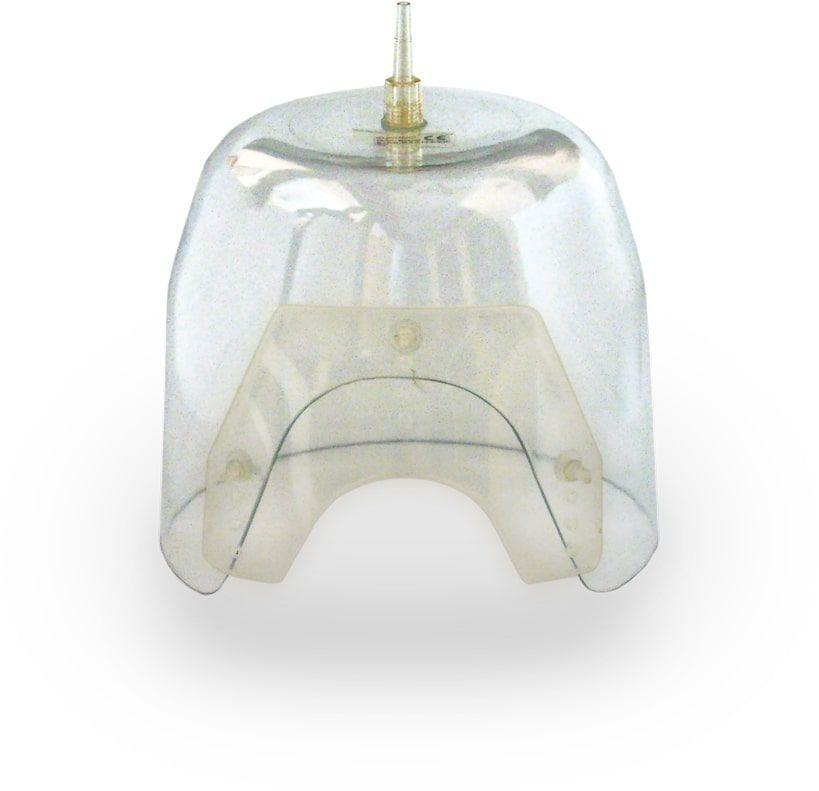 Bird Meditech, a leading manufacturer, and global supplier of medical devices in India, presents the Oxygen Hood. This oxygen hood is designed to provide optimal respiratory support and care for patients. It is made of polycarbonate material, ensuring durability and safety. The single-piece round shape of the hood is unbreakable and autoclavable, promoting ease of use and maintenance. With its trauma-free design, featuring a silicone neck with an adjustable flap, the Oxygen Hood ensures comfort and minimizes the risk of injury. The bilateral oxygen nozzle prevents the direct flow of cold oxygen to the patient’s head, enhancing the overall experience and effectiveness of oxygen therapy.
Bird Meditech, a leading manufacturer, and global supplier of medical devices in India, presents the Oxygen Hood. This oxygen hood is designed to provide optimal respiratory support and care for patients. It is made of polycarbonate material, ensuring durability and safety. The single-piece round shape of the hood is unbreakable and autoclavable, promoting ease of use and maintenance. With its trauma-free design, featuring a silicone neck with an adjustable flap, the Oxygen Hood ensures comfort and minimizes the risk of injury. The bilateral oxygen nozzle prevents the direct flow of cold oxygen to the patient’s head, enhancing the overall experience and effectiveness of oxygen therapy.
Oxygen Hoods
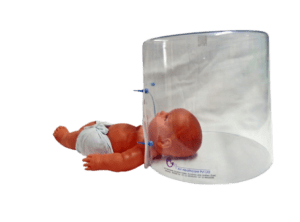 AVI Healthcare Pvt Ltd. is the manufacturer of Oxygen Hoods, a prominent Indian manufacturer and global supplier, Oxygen Hoods are cost-effective devices designed to create a controlled environment chamber for infants. These hoods ensure precise and consistent oxygen concentrations, while avoiding direct cold oxygen flow onto the baby’s face and head. They are also utilized for delivering warmed and humidified oxygen to neonates requiring increased oxygen levels. The Oxygen Hoods are commonly used alongside Infant Warmers/Incubators to maintain optimal humidity and temperature. Crafted from unbreakable polycarbonate, they boast a durable construction with no sharp corners, prioritizing the safety and comfort of the infants. Experience reliable performance and enhanced care with AVI Healthcare’s Oxygen Hoods.
AVI Healthcare Pvt Ltd. is the manufacturer of Oxygen Hoods, a prominent Indian manufacturer and global supplier, Oxygen Hoods are cost-effective devices designed to create a controlled environment chamber for infants. These hoods ensure precise and consistent oxygen concentrations, while avoiding direct cold oxygen flow onto the baby’s face and head. They are also utilized for delivering warmed and humidified oxygen to neonates requiring increased oxygen levels. The Oxygen Hoods are commonly used alongside Infant Warmers/Incubators to maintain optimal humidity and temperature. Crafted from unbreakable polycarbonate, they boast a durable construction with no sharp corners, prioritizing the safety and comfort of the infants. Experience reliable performance and enhanced care with AVI Healthcare’s Oxygen Hoods.
Neonatal Oxygen Hood
VNG Medical Innovation System Pvt. Ltd. offers the Neonatal Oxygen Hood, designed specifically for neonatal care. This plastic dome-shaped hood provides a warm and moist oxygen environment, ensuring optimal breathing conditions for infants. With a focus on patient safety, the neonatal oxygen hood has smooth edges, preventing any potential harm. Its transparent and reusable design allows healthcare professionals to maintain proper vigilance over the infant’s condition at all times. The hood ensures 80-90% oxygen delivery, good humidification, and a controlled temperature, supporting effective neonatal oxygen therapy. It can be used in conjunction with oxygen regulators to achieve controlled oxygen flow rates, enabling tailored treatment based on the patient’s needs.
Doctroid’s Oxygen Hood
Doctroid India Pvt. Ltd., a trusted manufacturer and global supplier, presents Doctroid’s Oxygen Hood. This single-piece round design, made of autoclave polycarbonate, offers reliability and durability in respiratory care. The trauma-free silicone neck adjustment flap minimizes oxygen waste and ensures a comfortable fit for neonates, infants, and pediatric patients. The silicone rubber neck port adjustment provides versatility, accommodating patients of various sizes. The bilateral oxygen nozzle prevents the direct flow of cold oxygen onto the patient’s head, maintaining optimal conditions for respiratory support. With dimensions of 7.5″ in height and 8.5″ in width, this oxygen hood offers a compact yet effective solution for patient care.
Neokraft’s Oxygen Hood
Neokraft Medical Private Limited, a leading manufacturer and supplier of medical devices in India, presents Neokraft’s Oxygen Hood. This oxygen hood features an adjustable silicon flap, allowing for a customized fit for patients with different neck sizes. The hood is made of a strong polymer material, ensuring durability and longevity. Neokraft’s Oxygen Hood is suitable for various clinical settings and provides reliable respiratory support. It promotes patient comfort, safety, and efficient oxygen delivery. With its user-friendly design and quality construction, this oxygen hood is an excellent choice for healthcare professionals seeking optimal respiratory care solutions.
Conclusion
Oxygen hoods offer numerous advantages in respiratory care, including optimized oxygenation, patient comfort, and improved treatment outcomes. When compared to other respiratory devices such as ventilators, nasal cannulas, oxygen masks, and high-flow nasal cannulas, oxygen hoods have unique benefits that make them a preferred choice in certain situations. By understanding their usage, maintaining hygiene, prioritizing safety, and recognizing their advantages in pediatric respiratory support, healthcare providers can leverage the benefits of oxygen hoods to enhance patient care and respiratory treatment.
Medzell, with its futuristic B2B platform, further facilitates access to Indian medical devices, including oxygen hoods, allowing healthcare providers to offer advanced respiratory support in emerging markets.

